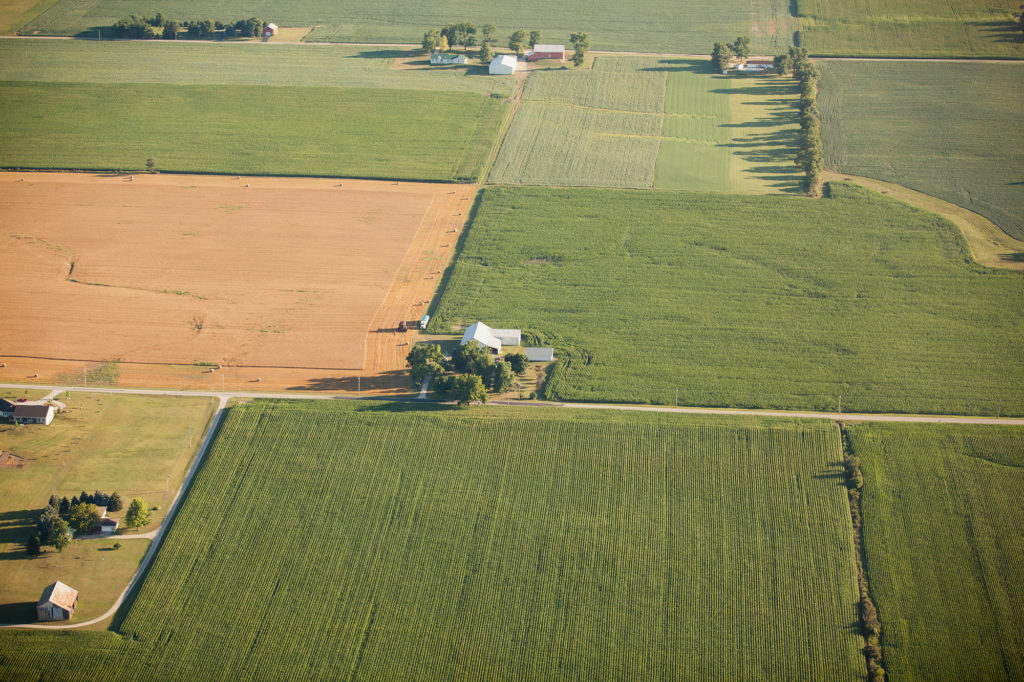
Updated: Sept. 4, 2018
The state of Indiana will invest $100 million to develop high-speed internet access in its sparsely populated counties. The announcement comes on the heels of new research showing the state could gain $12 billion in economic benefits from rural broadband service.
“Today we’re sending a big message to the world that Indiana is making a huge investment in our quality of life and for those who aspire to join us,” Gov. Eric Holcomb said at a Sept. 4 gathering of elected officials and community leaders at South Central Indiana REMC in Martinsville. “We are linking Hoosiers to each other and to the world.”
The funds will be used for a new grant program “to bring high-speed, affordable broadband access to unserved and underserved areas of the state,” Holcomb said. Online education and better crop management are just a few of the benefits Indiana residents will reap from rural broadband, he said.
Tom VanParis, CEO of Indiana Electric Cooperatives, said the announcement demonstrates the governor’s “commitment to eliminating the ‘haves and have-nots’ and to reshaping how this vital service is made available to all Hoosiers, regardless of location.”
The study released last week by the Purdue Center for Regional Development examined the costs, benefits and investments of broadband deployment in seven Indiana co-op territories. A $4 return to the local economy was estimated for every dollar spent on the infrastructure.
“Extrapolating the net benefits for these seven REMCs to the state, the total for the state of Indiana would be $11,976,222,899. In other words, the state of Indiana would receive about $12 billion in net benefits if the broadband investment were made statewide,” according to the study.
“Across rural communities in this country, the need for access to reliable internet is undeniable,” said Bill LaDuca, sector vice president for electric distribution at CoBank. “This groundbreaking study has immediate implications for rural Indiana’s healthcare, education, economy and way of life. It also has implications nation-wide as to the economic return of this vital infrastructure investment.”
Indiana Electric Cooperatives and Tipmont REMC commissioned the study, and CoBank funded it.
“The areas of the state that lack affordable and reliable high-speed internet are largely the same as those served by electric cooperatives,” said VanParis. “The study clearly shows the return on the investment to the state is significant and justifies a meaningful state investment to supporting broadband deployment in Indiana.”
“It is fundamentally important to us to improve the overall economic health, vitality and quality of life in the communities we serve,” he said. “These findings validate the feedback from our consumers that reliable internet service is as vital to modern economic development, education and health care as electricity is.”
Tipmont REMC, Henry County REMC, Jackson County REMC, Marshall County REMC, Noble REMC, Orange County REMC and Whitewater Valley REMC were examined for the report.
Indiana’s 38 co-ops distribute electricity in 89 of the state’s 92 counties, or about 80 percent of the landmass. About 10 electric co-ops in Indiana are building out a broadband network themselves or through a partnership.
In 2017, Indiana Electric Cooperatives successfully urged state lawmakers to allow co-ops to use existing easements for the purpose of delivering broadband without having to renegotiate. The new law eliminates a major obstacle to delivering this service to members.
Cathy Cash is a staff writer at NRECA.